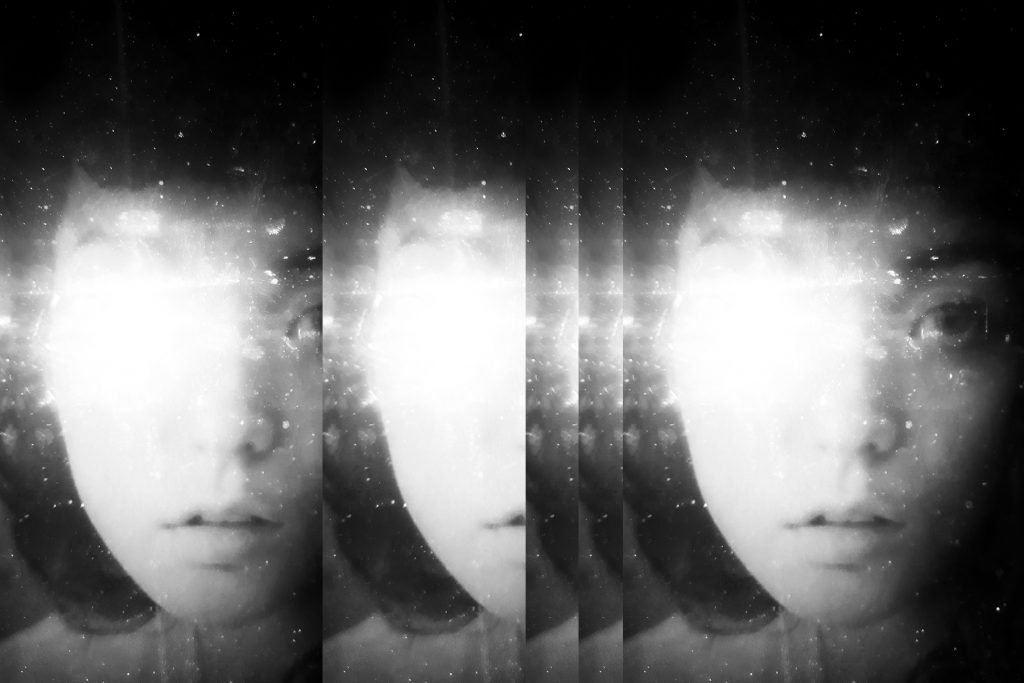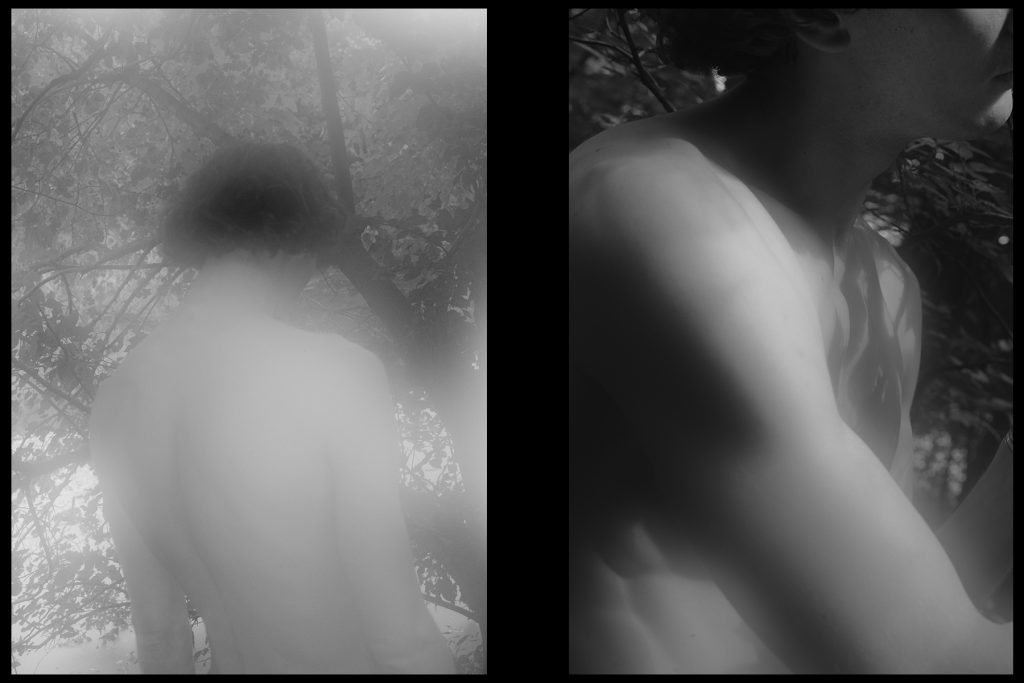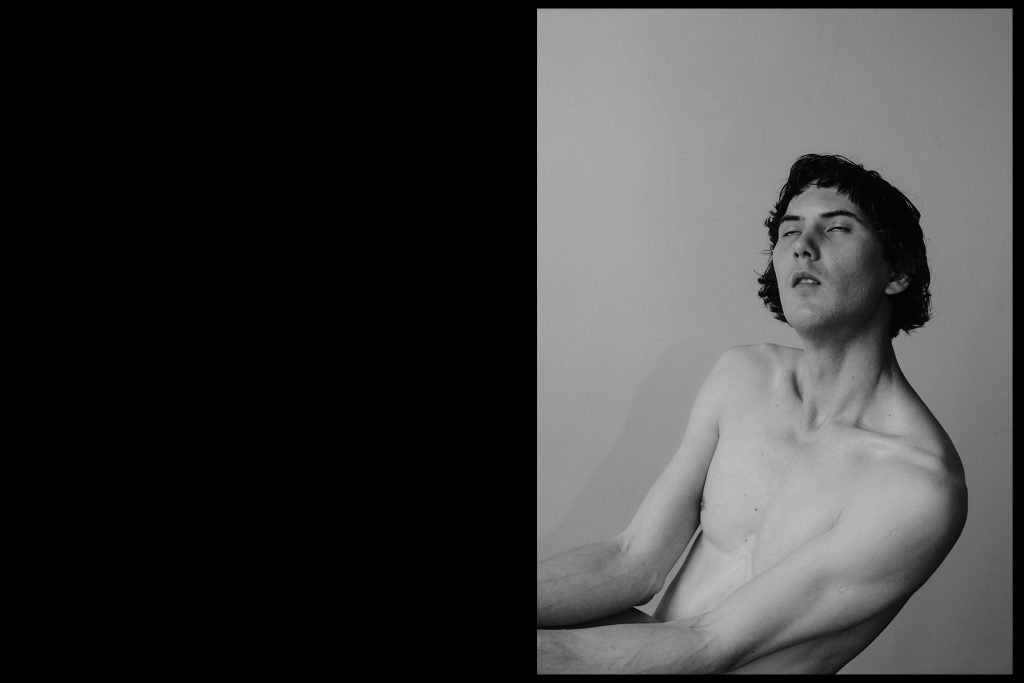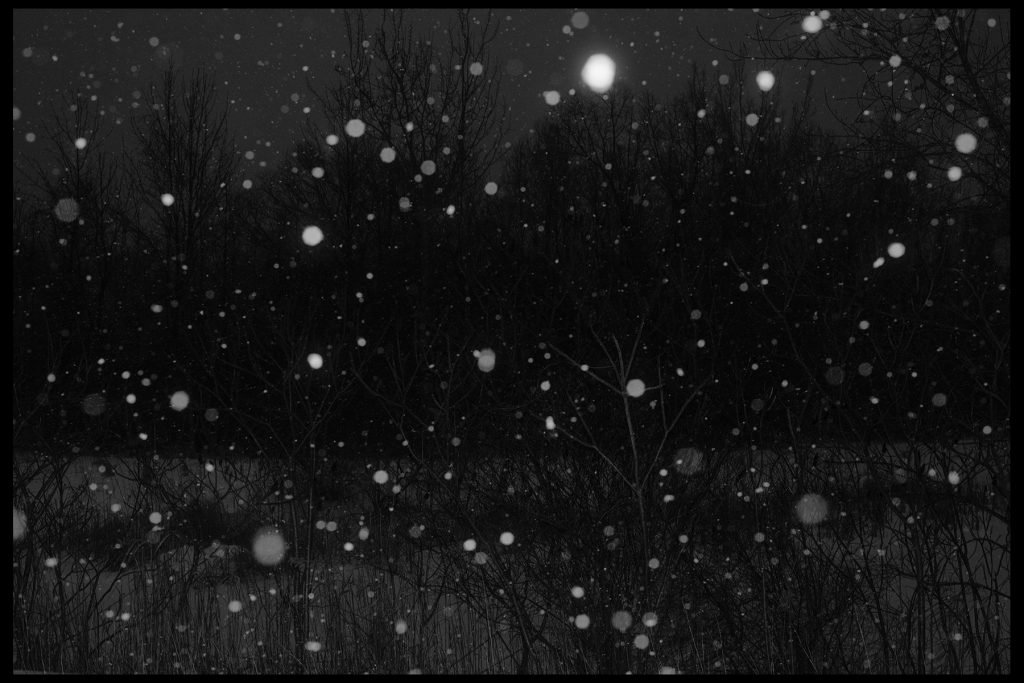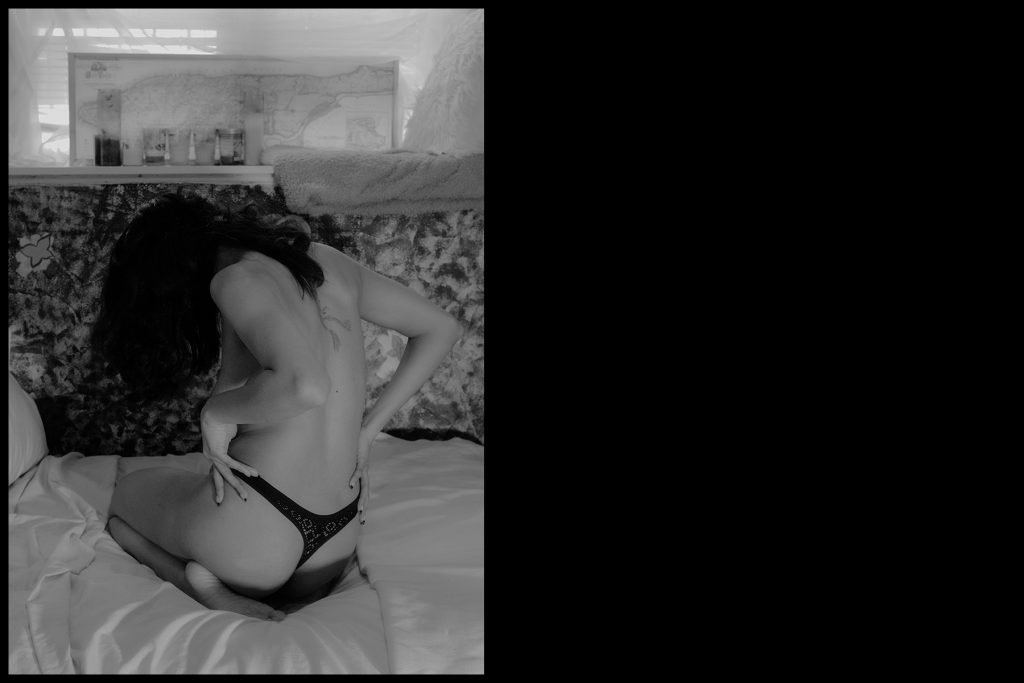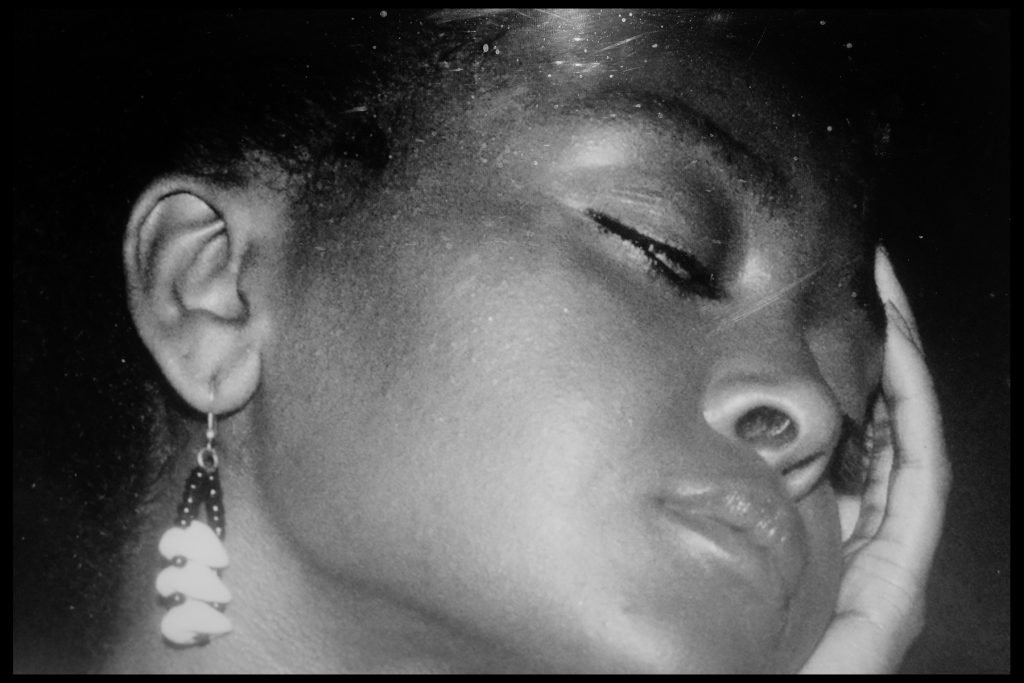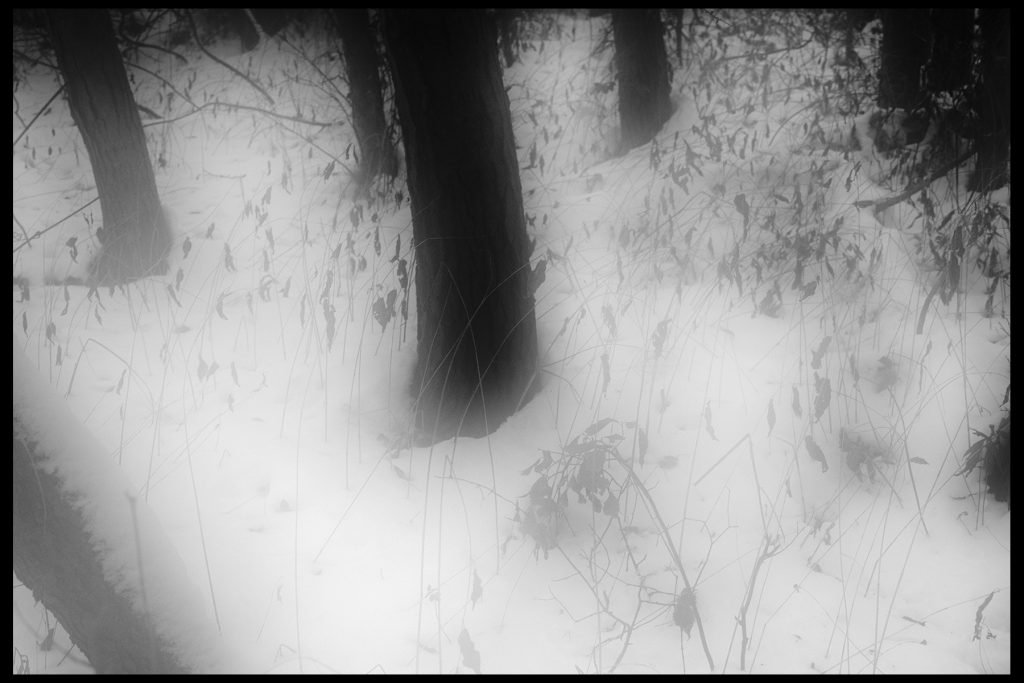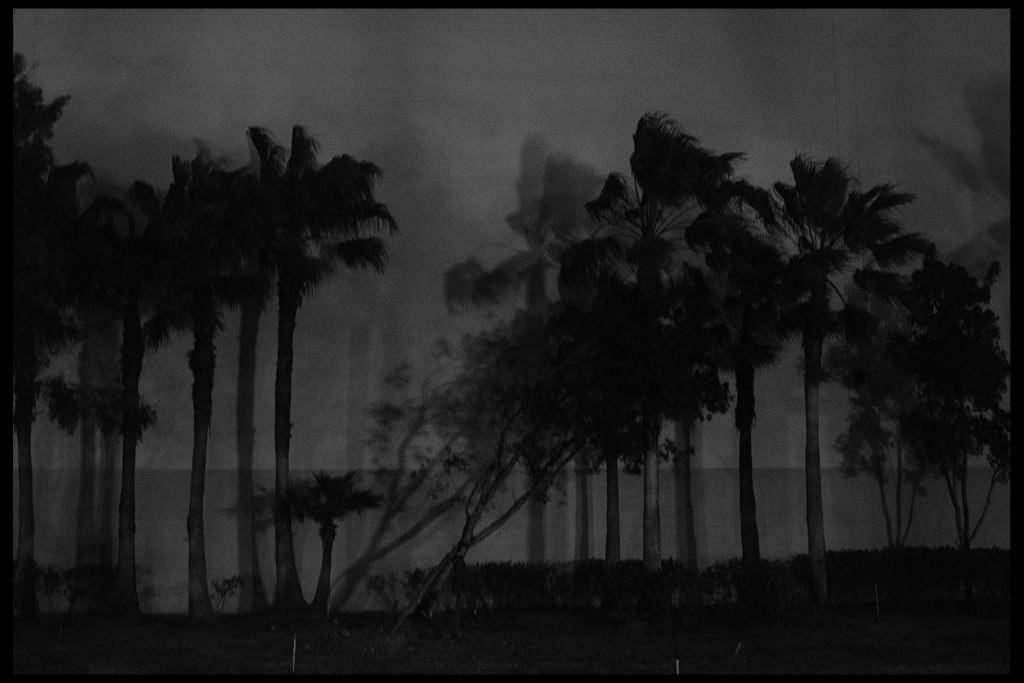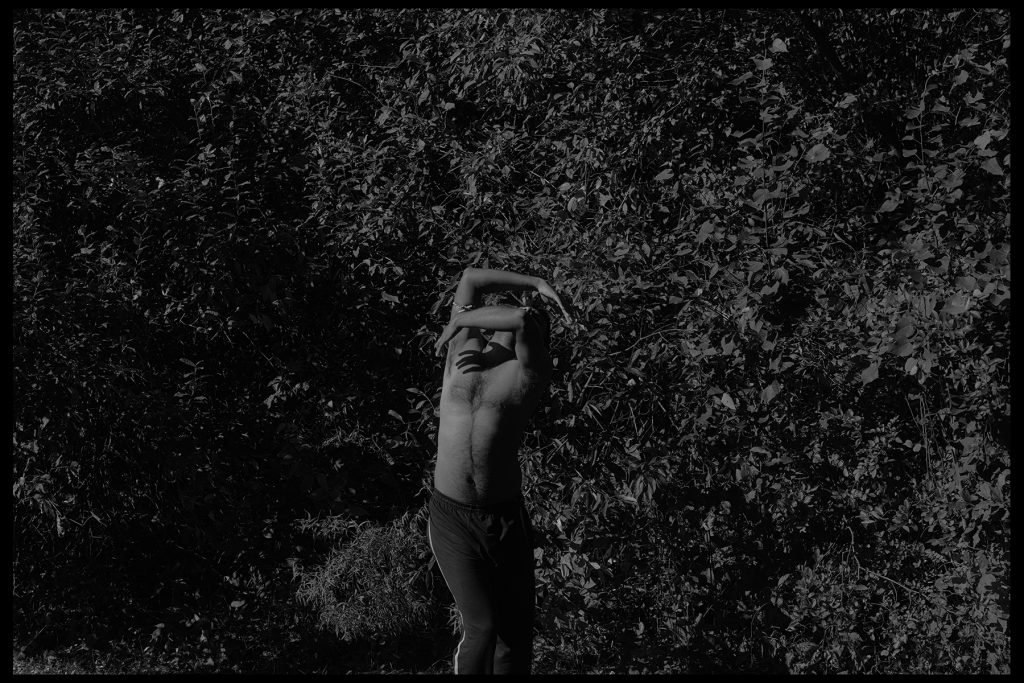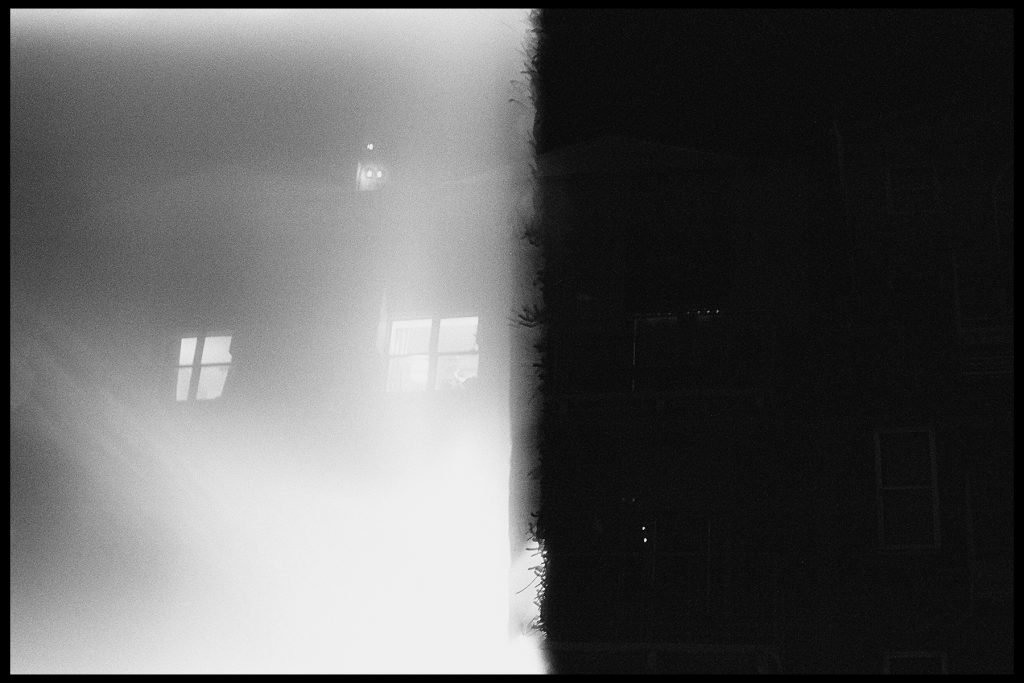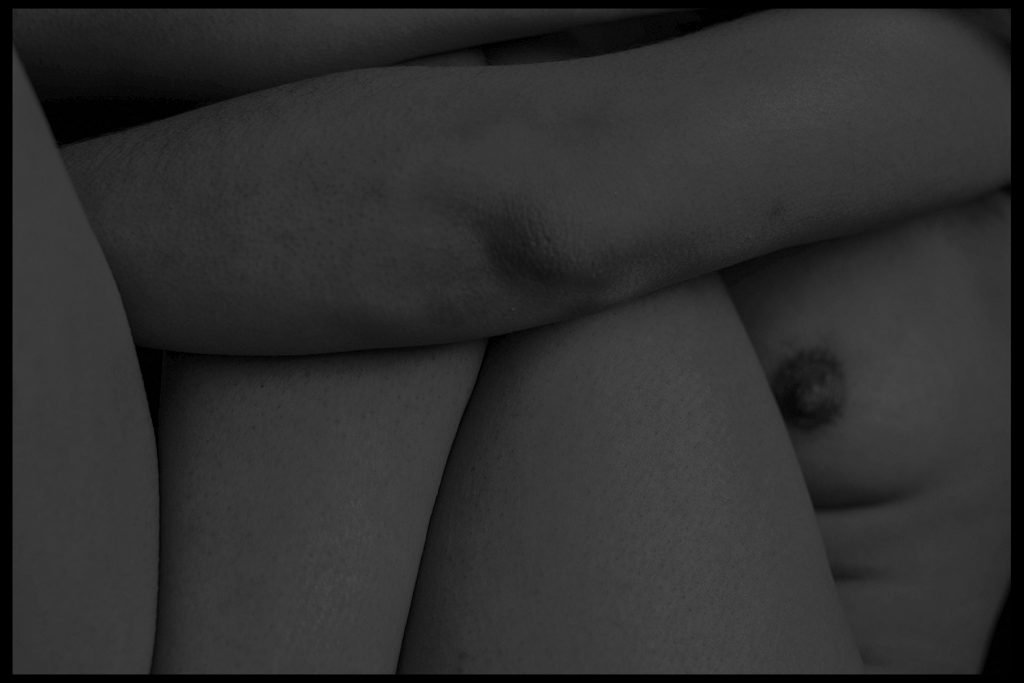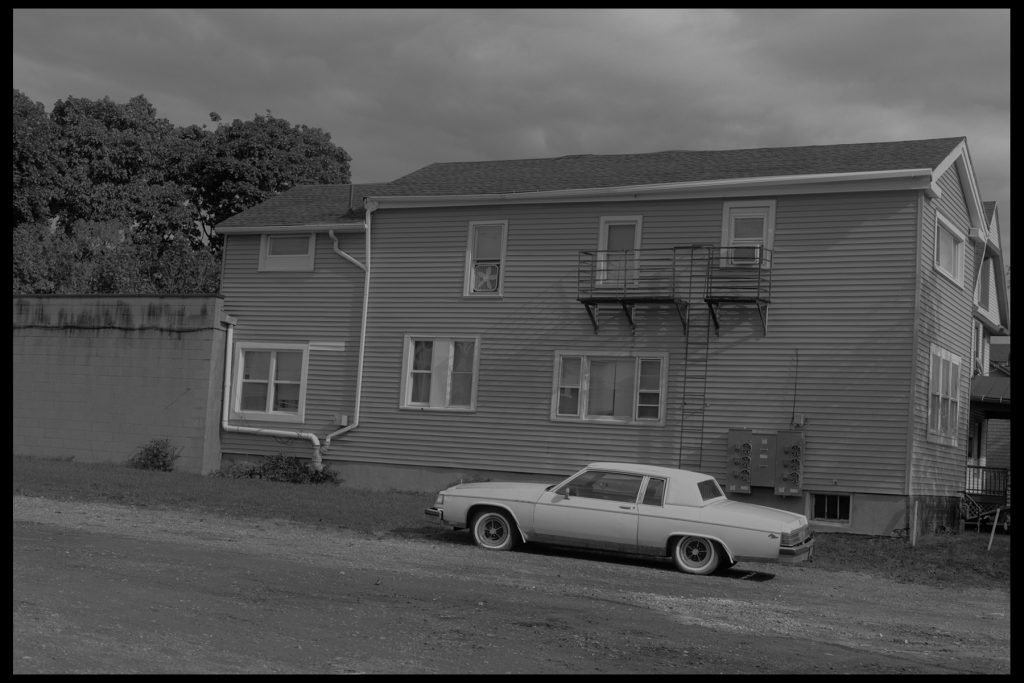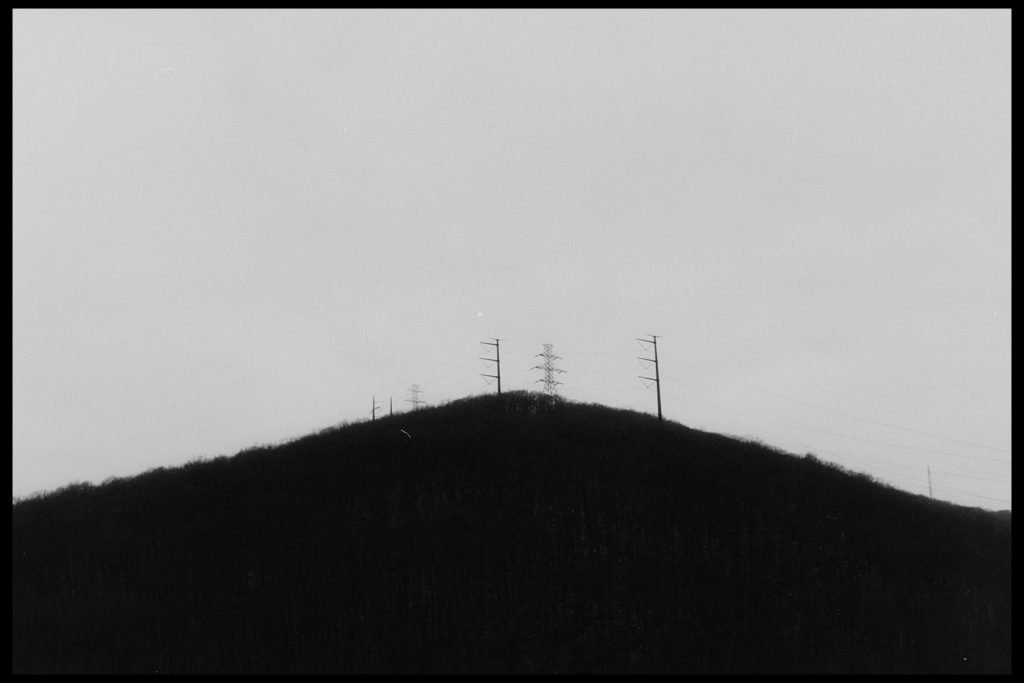Confronting tuberculosis at the age of 17 forced me to live a life in isolation for a long period of time-part of which was associated with stigma; part with my own fear and shame of not having lived fully and losing time. After the suicide of a lover, to live again was the only way out.
Tragedies shape the human in you.
The act of photography is a pretext to getting closer. To continue living a dual life: One, in a vulnerable position of solitude. The other, within the personal space of strangers. Some stay. Some fade away.
Fragments of the Dying Man is a diary of fragility, loss and desire. A play of images, words and performance.
It oscillates between Isolation and Intimacy. Day and Night. What’s in control and what’s not. The lines are blurred.
Much like the life lived, the images are soiled, weary, damaged and fragile. Sometimes seen through a screen, sometimes rephotographed and sometimes reproduced moments of spontaneity.
This journey passes through lands that are vast yet confined with so little happening, looking outside for a semblance of love and sometimes inside, often photographed by strangers surrendering to their will. But who is looking at whom? All merge into one another. It’s a faint reminder of a tragic past that haunts me again and again. It’s a past filled with anger, despair and desolation.
At the end are my encounters with strangers with whom I share moments, during my wanderings. Those that gave me a shelter, those like me. Encounters and spaces. Confined, intimate and visceral. Much like me, everyone I desire through an image lives a life of ambiguity. Someone is an androgynous erotic performer, someone a “cam girl”, someone is a stigmatized sex worker, someone works an odd job, only to survive in a fast- changing capitalist society that is slowly consuming us all. For me the identity is not based on what the person does to exist in a world where power dictates social norms and moral codes. Different worlds struggle to exist, finding a way out only through the camera, without the fear of being judged. Some have been abused sexually, some bullied, some in a deep sense of anguish, exploding through the feeling of desire and being desired. Bound together through the logic of the lure.
Photographing leads people to share their most intimate experiences and some break down in the process. This journey is a Zeno’s paradox: The closer you get to someone, the more distanced you become. It is in these contradictions that I thrive and live my reality.
How photography creates a fiction around us? Me and the other, and how through this fiction, of promiscuous exchanges, we get closer to understanding what it means to be here. The narratives are simple, often repetitive , with people acting on their own whim, being the actors and directors of the stage of desire, trying to understand their body and the spectrum of their human experience through being an image. Clothed, barely or nothing at all. A subtle vulnerability that becomes the symbol of an unspoken strength and sexual power.
The Fragments is based on disavowals. It plays with the ambiguity of our identity, my identity, auto-eroticism and the nude- the masks that we put on to perform for the camera and in life. Those photographed are aware that a camera is observing them , sometimes they become part of the voyeuristic exercise, and perform, sometimes just be. The body is the site of desire, site of resistance , a symbol of performance. To seek pleasure, to express agony. Pain.
The camera IS the protagonist, subjecting me and those around me to a vulnerable position of solitude and a way of identifying with our body – a vessel to recognize our being in the world. Confronting the dichotomies of our position. In its experience with the “queer” body, desire and space , this journey strives to look beyond the “presupposed zones of identity and representation, to think of the anonymous, erotic and uncertain forms of “sociality” ” – death, disappearance and the fragmentary passage of people and places.
Through this, I try to live up to my own questioning of desire and the inarticulate form that sits between proximity and promiscuity and is, maybe called love.
I seek the other and in this constant pursuit of desire, pleasure, fear, doomed to fail, I find my own reconciliation.
Debmalya Ray Choudhuri (b. 1992) is an artist and writer from India, currently based in New York . He uses performance, writing and photography in his work.
Confronting some personal crises , he left India and is now based in New York. He deals with the themes of the “queerness” of desire, love, and identity using a very personal and intense approach.He sees photography as an interface with the world, a way to confront it, a way to desire and define his own position. His practice has its roots in the need to take distance from the chaos of the surroundings, and get intimate, physically and emotionally, in places where the hunt is more lyrical, delicate, sometimes strong and operating in the region between fear and desire. Over time, the creative practice has naturally flowed from finding a sense of belonging to one place, to connecting to people by establishing closeness to one person at a time. This way, the author tries to understand the why’s and how’s people express desire and love and uses photography to converse with them. He uses these experiences, and conversations with strangers and friends to build the complex play of what it means to be here, to struggle and to live in a broader sociopolitical realm of existence. The lines between the subject and the photographer are blurred and fluid in his work. These dual conversations open new perspectives on the relationship between the self and the other.
He attended workshops at The International Center of Photography (ICP) in New York for a while and currently works on long term projects. He was selected for a mentorship with an Italian research school Spazio Labo with artist and Guggeinheim fellow Elinor Carucci . He was selected for a prestigious Magnum workshop under Antoine d’Agata Brooklyn, New York. He has assisted Antoine d’Agata at a Magnum workshop in Miami Photo Festival, 2019 and worked as a technical crew for White Noise and Codex, Antoine d’Agata’s first US retrospective.
He has published his work in magazines and platforms in India like Better Photography India, Inspiro India, Asian Photography magazine,Matter+Form and international publications on The Guardian, The BBC, British Journal of Photography ,The Telegraph UK, National Geographic,Invisible Photographer Asia, MonoVisions, contemporary art platforms like Phroom magazine, FishEye magazine, Feature Shoot, Loeil de la Photographie, Editor’s pick in OpenWalls Arles, British Journal Of Photogaphy, Ignant, Too Tired Project, Athens based fine art journal,Phases magazine, US Fine art journal Lenscratch, Der Grief Germany,Italian art magazines C41,Clickmagazine among others . He has displayed across the country and abroad like Blank Wall gallery,Athens, India Habitat Center, Focas Photo festival Scotland, Edinburgh Napier University, Rochester Fringe Festival, Too Tired Project,Canton, Miami Photo Festival, Photoplace Gallery, Vermont,USA. He has displayed work as part of books by Kris Graves Project, New York at New York Art Book Fair, Unseen Amsterdam. Recently, he was part of #TurbineBagh protest art movement, at Tate Modern, London organized by Sofia Karim and The Interval program curated by Natasha Caruana, UK Based artist and researcher.
